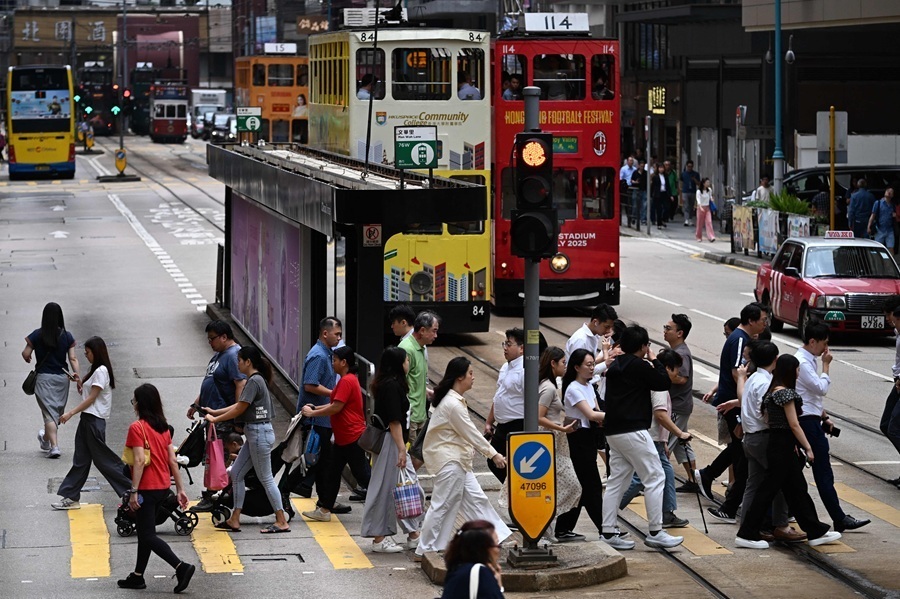Fuzhou: Where every street tells a story and every bite delights
Fuzhou is a city rich in history, connected to well-known figures throughout time. Yet today, it beautifully bridges past and present — preserving its historic architecture and beloved culinary traditions for all to experience. Former Lianhe Zaobao senior correspondent Chia Yei Yei takes us through this charming city.
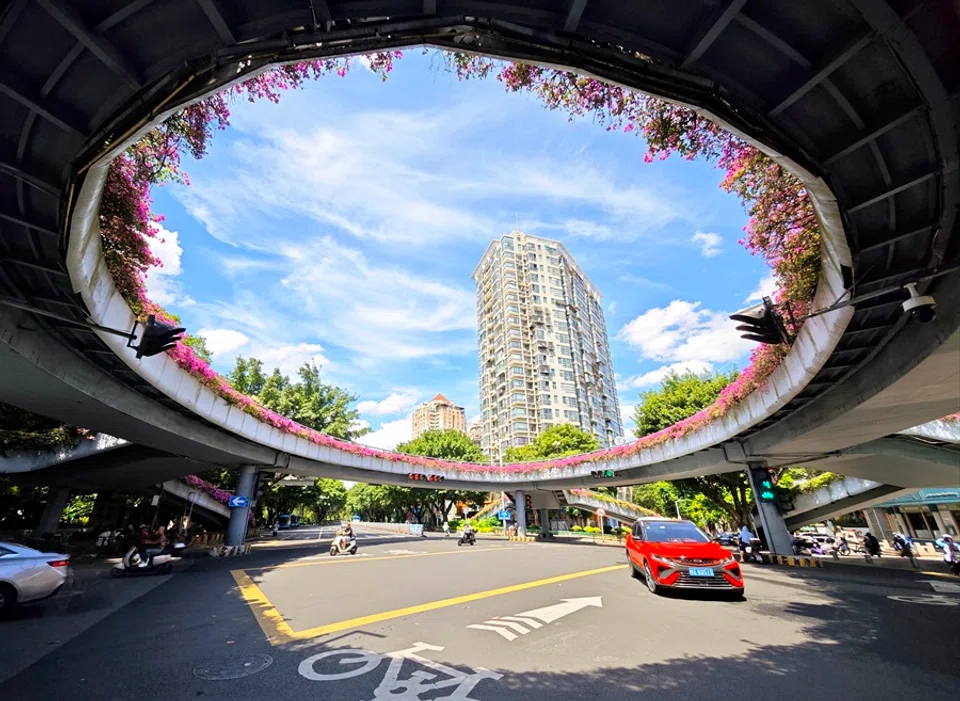
In the past, going to Fuzhou usually meant one thing: visiting Sanfang Qixiang (三坊七巷, lit. “Three Lanes and Seven Alleys”). But few realise that there are other historical and cultural gems worth exploring in Fujian’s provincial capital.
A walk through dynasties
When I returned to the city for the third time in late April this year, I was pleasantly surprised to find that, following the Covid-19 pandemic, Fuzhou had quietly reinvented itself and taken on a fresh look. There were now many more interesting spots to visit, such as Shangxiahang (上下杭) in Taijiang district and Yantaishan (烟台山) in Cangshan district.
Of course, Sanfang Qixiang remains the top attraction for visitors. Most travellers cannot resist strolling back and forth along the bustling Nanhou Street, occasionally ducking into the side alleys in search of historical residences of notable figures. To the east of Nanhou Street are the seven alleys: Yangqiao, Langguan, Anmin, Huang, Ta, Gong and Jibi. To the west lie the three lanes: Yijin, Wenru and Guanglu.
Today, it is one of the best-preserved examples of the ancient “residential ward” system (里坊制度) in Chinese cities, and also a renowned destination for admiring traditional Ming and Qing architecture.
A landmark of Fuzhou, Sanfang Qixiang was first established in the late Western Jin dynasty and developed further through the late Tang, Five Dynasties and Ten Kingdoms period and Song dynasties, flourishing during the Ming and Qing dynasties. Today, it is one of the best-preserved examples of the ancient “residential ward” system (里坊制度) in Chinese cities, and also a renowned destination for admiring traditional Ming and Qing architecture.
Staying in a grand historic mansion
Over a decade ago, the local government began investing heavily in the revitalisation of Fuzhou’s old town. Restored houses have been transformed into shops selling a mix of traditional and contemporary handicrafts, such as seals, sachets, wooden combs, and Jian ware (建盏) — a type of Chinese tea bowl famous for its dark, iron-rich body and glaze patterns. Others have been repurposed into eateries offering local delicacies like Fuzhou fish balls, Fujian-style wonton (肉燕), taro paste and peanut soup to entice visitors.
The deeper courtyards hidden within the alleys are now run as former residences of notable figures, art galleries or various themed exhibition spaces. A select few have even been turned into boutique hotels, allowing guests to experience the charm of staying in a grand historic mansion.
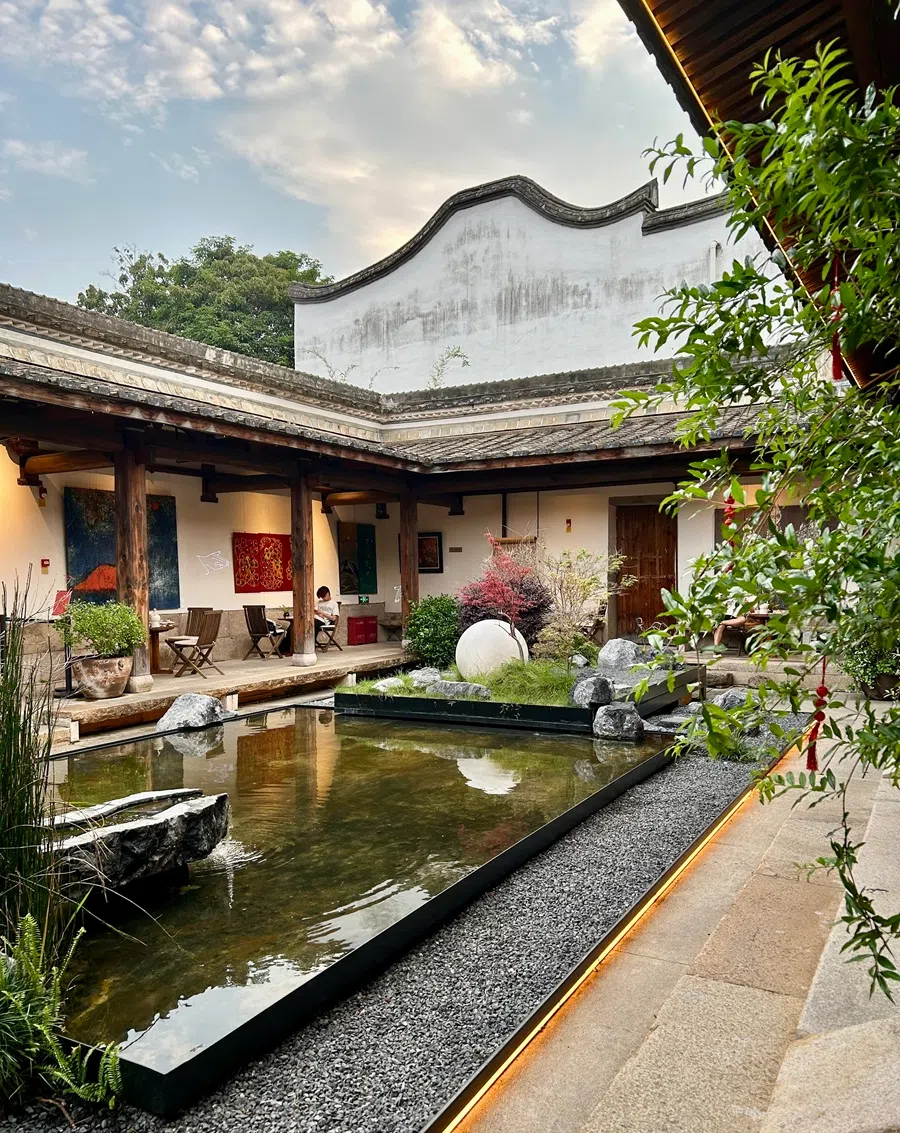
The Anmin Banshe hotel (安民·半舍) that we stayed at is one such example. Opened just two years ago, it offers 16 unique guest rooms of varying sizes, along with elegant corners designed for sipping tea, practising calligraphy, playing the guqin, admiring flowers or listening to the rain — an exquisitely refined retreat.
Diagonally opposite the hotel is the former residence of Lin Congyi (1824-1878), the son of Qing dynasty Chinese scholar-official Lin Zexu — best known for his staunch opposition to the opium trade, which led directly to the First Opium War (1839-1842). This old house was built during the Ming dynasty and was purchased by Lin Congyi during the Daoguang era as his home. Lin Congyi was always by his father’s side; when his father was summoned to serve in Guangxi and died of illness en route in Puning, he was the one who escorted his father’s coffin back to their hometown.
... if you are in the mood for some action, all it takes is a short walk to the entrance of the alley, and suddenly you find yourself in the hustle and bustle of a busy commercial street — surrounded by lights, colours, crowds; a feast for the senses.
The most magical part of staying in these ancient alleyways is how just a few steps can transport you between two completely different worlds. In the alleys, the deep courtyards and high walls shut out the noise and bustle of the outside world, immersing you in a sense of peace, tranquillity and leisurely contentment. But if you are in the mood for some action, all it takes is a short walk to the entrance of the alley, and suddenly you find yourself in the hustle and bustle of a busy commercial street — surrounded by lights, colours, crowds; a feast for the senses.
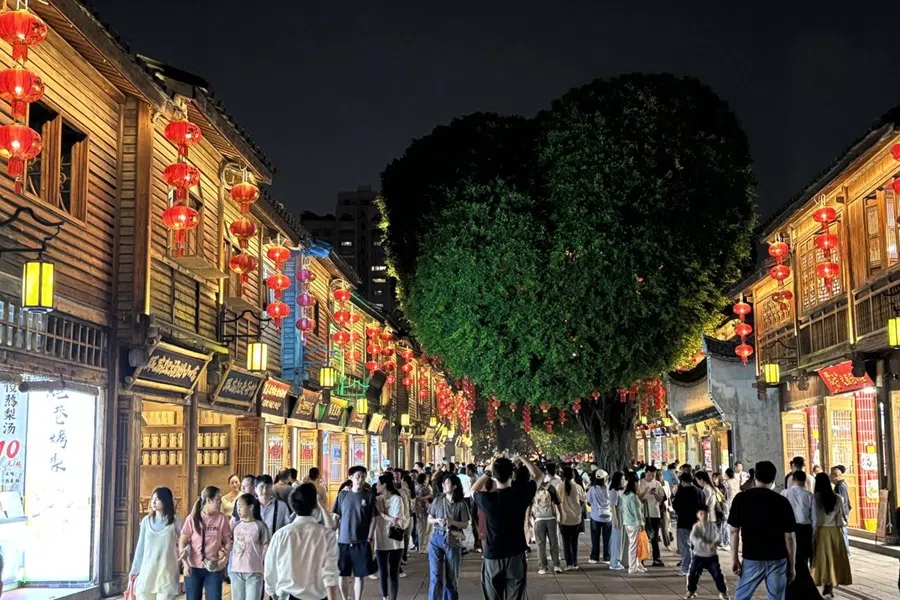
The most popular photo spot on Nanhou Street right now is a quirky heart-shaped tree. Originally just an ordinary Chinese banyan growing in the middle of the street, someone noticed it resembled a heart. Inspired by the idea, the authorities decided to trim it into a heart shape, and it became an instant hit.
A must-visit spot and many historic homes
Next door to Anmin Banshe hotel is a small shop selling Shoushan stone carvings. Visitors can choose from pre-carved seals or commission a craftsman to carve a personalised one. Shoushan stone, extracted from Shoushan township in Jin’an district, is renowned as the “king of stones”. However, precious raw materials like Tianhuang (田黄) and Lizhidong (荔枝洞) stones have largely been depleted. More commonly found today are varieties such as Furong (芙蓉) and Gaoshan (高山) stones.
With over 260 historic residences scattered across the area, most visitors can only leisurely wander and skim the surface.
On this trip, we were fortunate to meet a veteran from Singapore who previously worked in the Shoushan stone trade. Thanks to him, we got to visit a Shoushan stone factory and a private museum, which gave us an unexpected and valuable opportunity to admire exquisite traditional craftsmanship and masterpieces by renowned artists.
In the Sanfang Qixiang historic district, the Lin Zexu Memorial Hall is a must-see. Just nearby is the former home of Lin Juemin, a revolutionary martyr, which was later lived in by Bing Xin, one of China’s most beloved modern writers.
The area also features beautiful traditional structures like the Shuixie opera stage and Ermei Library, plus homes of other important cultural figures like translator Yan Fu and poet Shen Baozhen. With over 260 historic residences scattered across the area, most visitors can only leisurely wander and skim the surface.
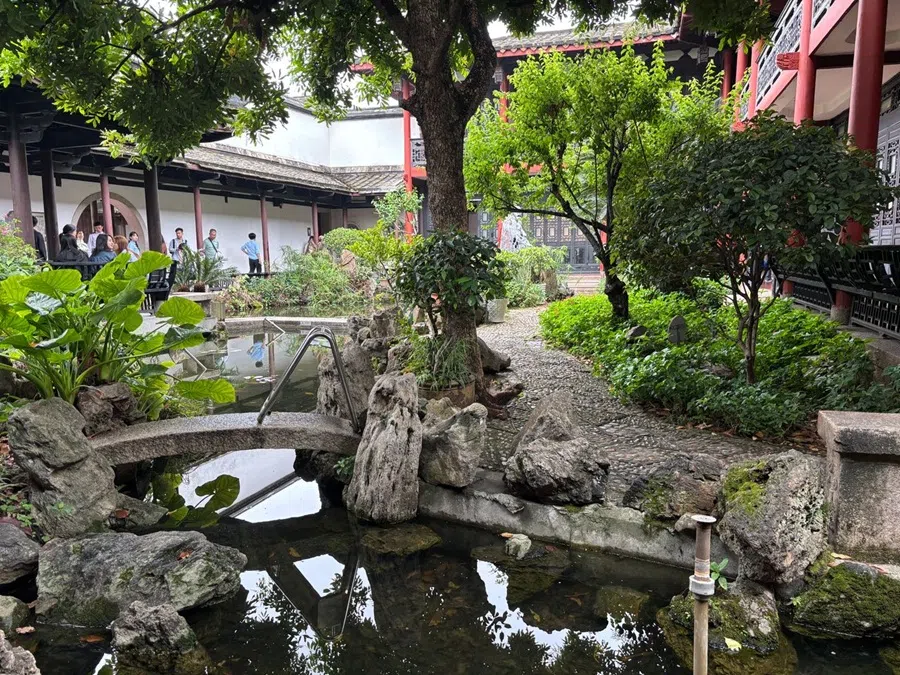
Lin Zexu is hailed as Fuzhou’s most revered national hero for leading the destruction of opium at Humen. The memorial hall, established in 1905, includes his former residence and ancestral hall, along with exhibitions that document his life, legacy, and the historical background of the Opium War.
The former residences of Lin Juemin and Bing Xin transport visitors to the era of the 1911 Revolution. Lin Juemin, one of the 72 martyrs of the Yellow Flower Mound Uprising, is remembered for his moving “Letter of Farewell to My Wife”, which secured his place in history as one of China’s most poignant revolutionaries. After his martyrdom, the Lin family, to avoid political implication, sold the old residence to Xie Luan’en — the grandfather of Bing Xin (Xie Wanying). Who would have thought that years later, the same residence would nurture another beloved writer?
Over 500 varieties of products were even traded at one point. At its height, the area was home to 260 trading companies and 110 private banks.
Ming dynasty’s commercial riverfront
Heading south along Fuzhou’s central axis, Bayiqi Road, you would arrive at the Shangxiahang commercial district in Cangxia — once a bustling hub of merchants and prominent figures. By the Min River, this trading area boasts a history spanning 300 to 400 years, reaching its peak from the mid-Qing dynasty to the early Republic of China era.
In its heyday, merchants from the upstream regions of the Min River, such as Jianning, Taining and Pucheng, gathered along Shanghang Road, while traders from Putian, Zhangzhou and Quanzhou settled along Xiahang Road. Merchant guilds from across the region traded in tea, dried bamboo shoots, paper, medicinal herbs, silk and general goods. Over 500 varieties of products were even traded at one point. At its height, the area was home to 260 trading companies and 110 private banks.
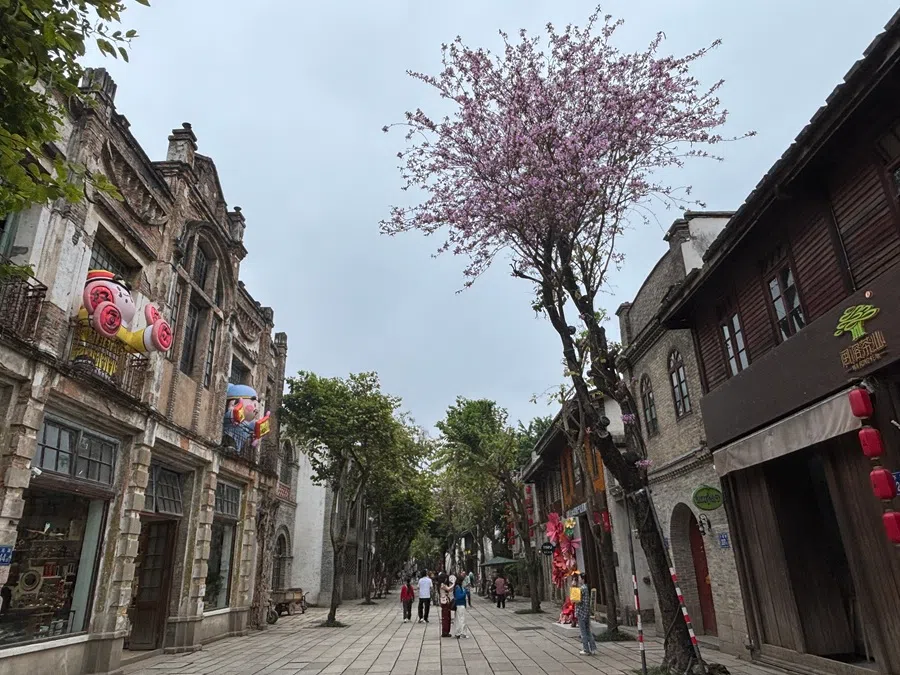
We stayed at Hangshe, a guesthouse converted from a century-old traditional residence, just a short walk from the entrance to Shangxiahang — an ideal base for exploring this historic and cultural district. The two-storey house, built in 1833 (the 13th year of the Daoguang Emperor’s reign), follows a traditional “three-section, five-bay” (三进五间) layout — that is, a structure arranged around three successive courtyards and five rooms across its facade. It was once the home and business premises of Yang Wenchou, proprietor of the Hechun trading firm. It was only recently renovated into a guesthouse with 22 rooms.
The main entrance of Hangshe faces the Sanjie River (三捷河). At nightfall, the scenery is beautiful, although cleaning works have not been the best, with an occasional lingering stench in the air. A friend was once shocked to see a local resident tossing rubbish into the water.
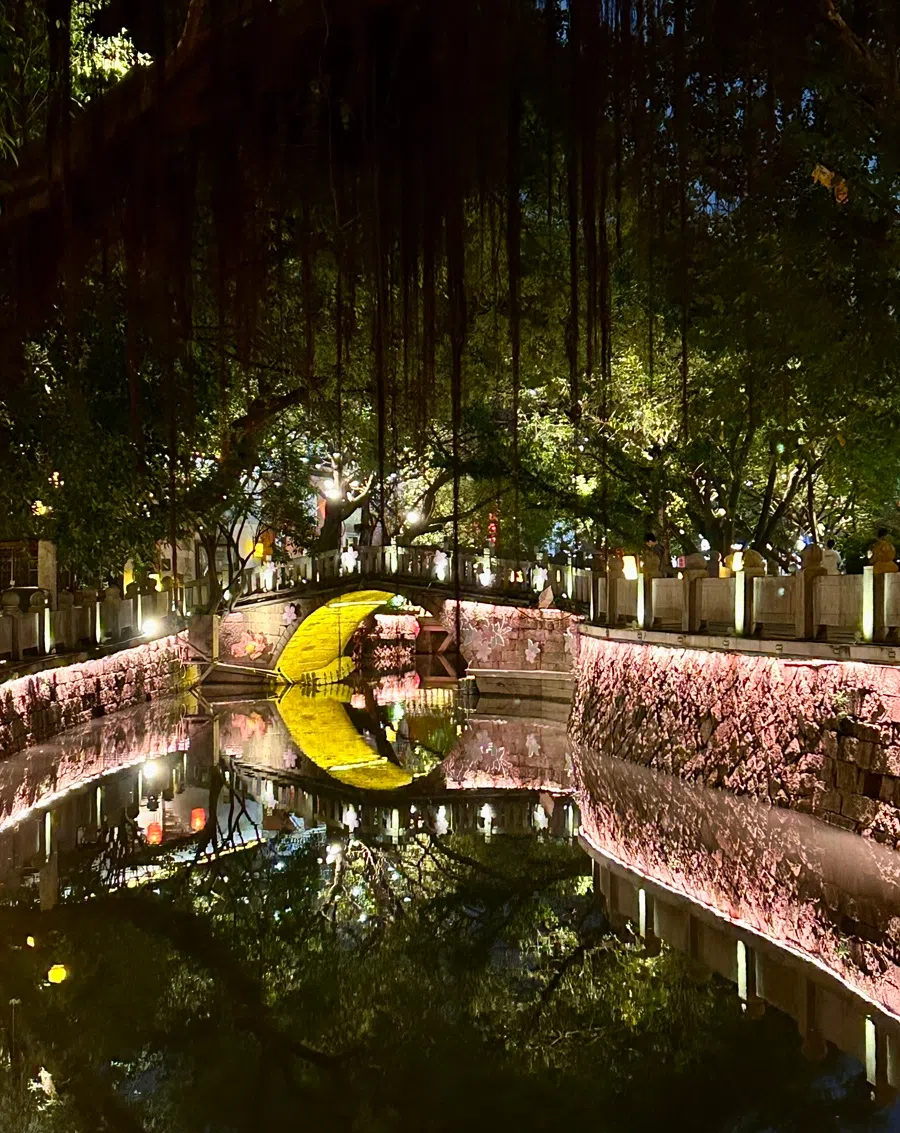
Strolling along the river bank, there are many sights to explore. Visitors can cross between the river’s two sides via three stone bridges — Santong Bridge, Sanjie Bridge and Xing’an Bridge. Santong Bridge was built in 1806 during the Jiaqing Emperor’s reign, while Xing’an Bridge is even older, dating back to 1786 in the 51st year of the Qianlong Emperor’s reign.
Next to Santong Bridge stands the Shuibu Shangshu Temple (水部尚书庙), built to honour Chen Wenlong, a scholar-general who resisted the Yuan invasion during the late Southern Song. In the Yongle period of the Ming dynasty, he was posthumously granted the title “Secretary of Water Affairs” (水部尚书), and has since been worshipped locally as a guardian of shipping and fishermen.
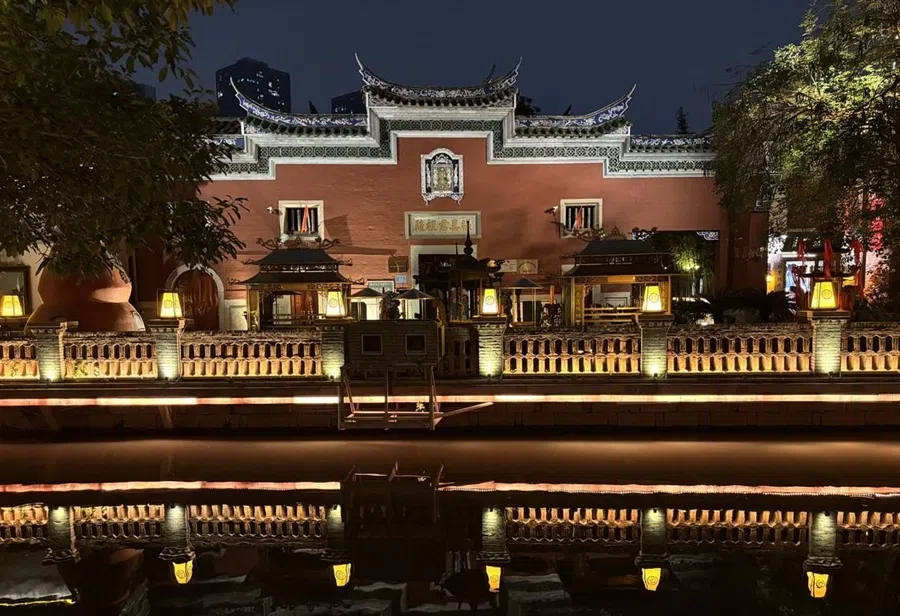
Not far from the temple is the ancestral shrine of Zhang Zhenjun, built during the Shaoxing era of the Song dynasty over 800 years ago. When we passed the ancient shrine that day, a group of Taoist priests were chanting scriptures and performing rituals for devotees.
... the Yongde Guild Hall, built during the Yongzheng Emperor’s reign in the Qing dynasty, has deep ties to Lee Choon Seng (李俊承, 1888-1966), an early Confucian businessman from Singapore.
A connection to Singapore
Opposite the ancestral shrine stands an impressive old building — the Yongde Guild Hall — jointly built by merchants from Yongchun and Dehua who traded in Shangxiahang back in the day. Outside the guild hall are two sculptures of Yongchun (Wing Chun) martial artists, while inside, Dehua porcelain and Yongchun vinegar are on display for sale.
But I was most intrigued by the fact that the Yongde Guild Hall, built during the Yongzheng Emperor’s reign in the Qing dynasty, has deep ties to Lee Choon Seng (李俊承, 1888-1966), an early Confucian businessman from Singapore. The guild hall still preserves a stone tablet inscribed with “The Eulogy of Mr Lee Lip Chai, the Taoyuan Elder”, recounting the story of Lee Lip Chai (李立斋) and his son Lee Choon Seng. The elder Lee, who made his fortune in Seremban, Malaysia, was from Yongchun, historically known as Taoyuan.
When the Lee family travelled to Southeast Asia for business, they would always stop in Fuzhou first and sail from there. Each time, they chose to stay at Yongde Guild Hall, where they socialised through poetry and connected with like-minded scholars. When the guild hall was reconstructed in 1931, Lee Choon Seng also made a substantial donation.
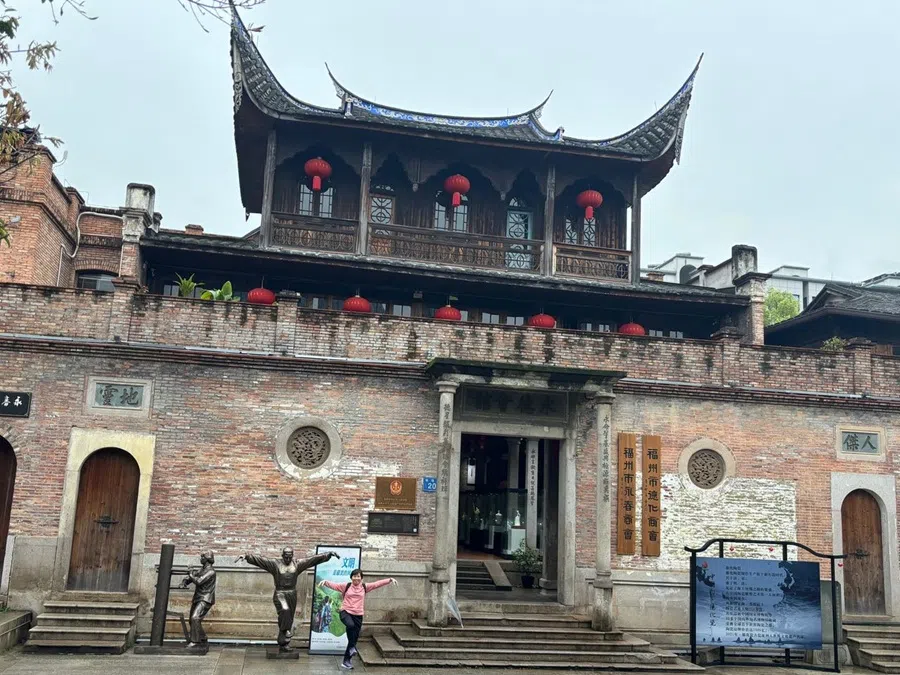
Lee Choon Seng once served as the 18th president of the Singapore Chinese Chamber of Commerce & Industry. When Tan Kah Kee led a delegation to China, Lee stepped in as chairman of the Singapore China Relief Fund Committee. He was also a leading figure in Chinese Buddhism (汉传佛教), the founding president of the Singapore Buddhist Federation, one of the initiators of The Singapore Buddhist Lodge, and chairman of the Board of Maha Bodhi School.
Many old buildings have been preserved in Shangxiahang. For instance, today’s Fuzhou Art Museum was once the residence of Huang Peisong, the top scholar in martial arts (武状元) from Fujian in the late Qing dynasty. It is also Fuzhou’s only surviving scholar mansion.
Other preserved historical sites include: the Nanfang Daily newspaper office from the Republican era; opulent cabarets (新紫鸾歌舞厅, 乐群芳楼) once frequented by wealthy merchants; Fuzhou’s earliest Western-style restaurant, the Dadong Hotel; and Cangxia Academy (苍霞精舍), a modern school converted from the former residence of Lin Shu, the celebrated translator of La Dame aux Camélias (《茶花女》).
The architecture of Yantaishan
Strolling from Shangxiahang towards the Min River and crossing the Jiefang Bridge, you will arrive at Yantaishan in Cangshan district. After the Opium War, Fuzhou became one of the five treaty ports opened by the Qing dynasty. Western countries eager to establish a presence in China quickly built consulates in Yantaishan, filling the area with European-style buildings.
Western churches built churches, missionary hospitals, missionary schools, and even publishing houses here — such as the Methodist Publishing House in China (美华书局), founded in 1859.
Britain was the first to set up a consulate, followed by 16 other countries including the US, France, the Netherlands, Denmark, Sweden, Norway, Spain, Germany, Japan, Austria, Belgium and Italy; all of which established consulates or representative offices here. This also spurred foreign trading firms to open branches there. Meanwhile, Western churches built churches, missionary hospitals, missionary schools, and even publishing houses here — such as the Methodist Publishing House in China (美华书局), founded in 1859.
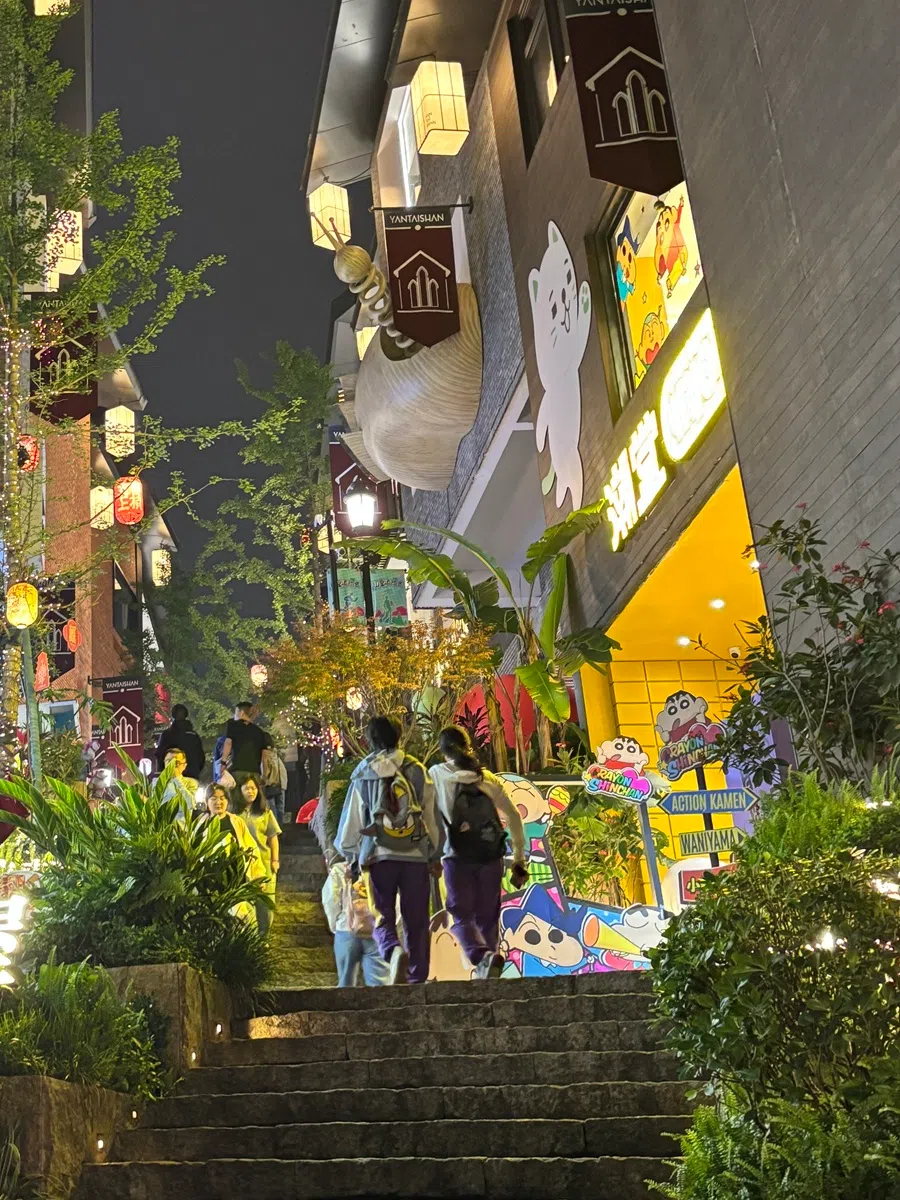
Turning right from Jiefang Bridge onto Cangqian Road, you’ll be drawn to the vibrant atmosphere of Anlan Guild Hall. Its theatre stage hosts various song and dance performances every evening, where visitors can enjoy dinner seated on the steps while watching the show.
Exploring Yantaishan from Cangqian Road can be quite a workout, as it involves climbing a long flight of steps. A less strenuous route through the architectural cluster is to turn left from Jiefang Bridge onto Guanjing Road and Meiwu Road, then loop around to Lequn Road, which leads to Yantaishan Park. This way, you can walk downhill instead of up, passing by landmarks such as the Cangshan Cinema, Foochow Club, the former British Consulate, the Foochow Customs Taxation Office, Zety Hotel, St John’s Church, Church of Heavenly Peace and the Methodist Publishing House in China.
Locals are no strangers to Fuzhou fish balls and Fujian-style wontons, and may also know that the famous Buddha Jumps Over the Wall originated here. However, ding bian hu (鼎边糊), or guo bian hu (锅边糊), meaning wok-side gruel, may be less familiar to some.
Sumptuous Fuzhou cuisine
No trip to Fuzhou is complete without tasting the city’s plethora of local snacks — a true treat for the taste buds. Locals are no strangers to Fuzhou fish balls and Fujian-style wontons, and may also know that the famous Buddha Jumps Over the Wall originated here. However, ding bian hu (鼎边糊), or guo bian hu (锅边糊), meaning wok-side gruel, may be less familiar to some.
This dish is made by pouring rice flour batter along the edge of a hot wok in a motion resembling ink being splashed. The batter cooks into thin rice noodle sheets, which are then scraped into a broth and simmered with seafood, vegetables and lean pork to create a steaming, hearty bowl of ding bian hu. Paired with crispy fried shrimp pastries, triangle yam cakes, or oyster fritters, it makes for a classic and delicious Fuzhou breakfast.
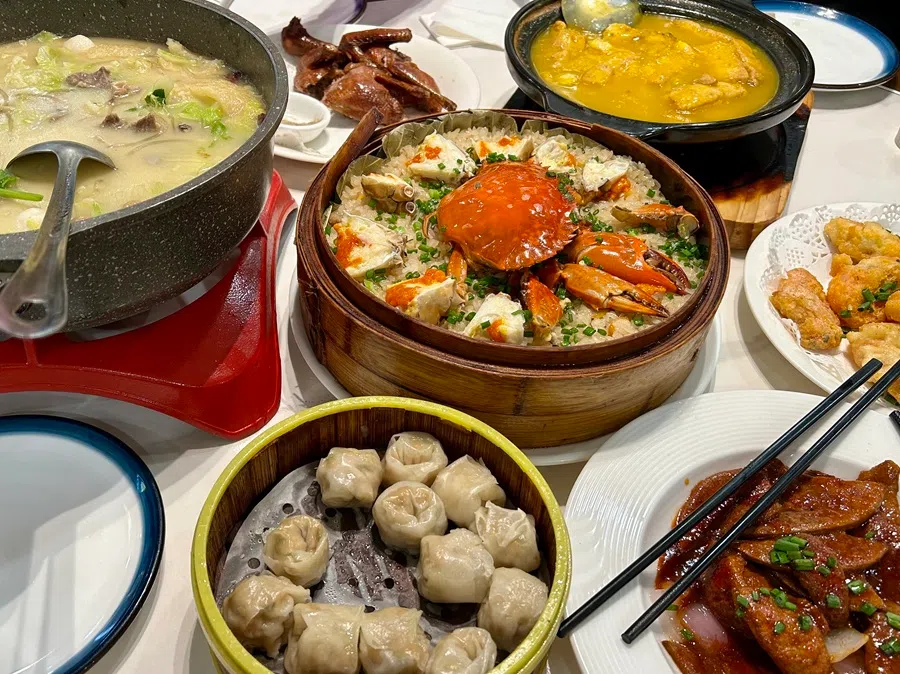
Visitors strolling along Nanhou Street will most certainly pass by Tongli Rouyan (同利肉燕), a well-known spot to try Fuzhou fish balls and Fujian-style wontons. What sets Fuzhou fish balls apart is their meat filling, typically made from finely minced eel or shark meat mixed with sweet potato starch. Meanwhile, Fujian-style wontons are made by pounding pork leg meat into a fine paste, then blending it with sweet potato starch to form a “meat wrapper”, which is used to encase a meat filling.
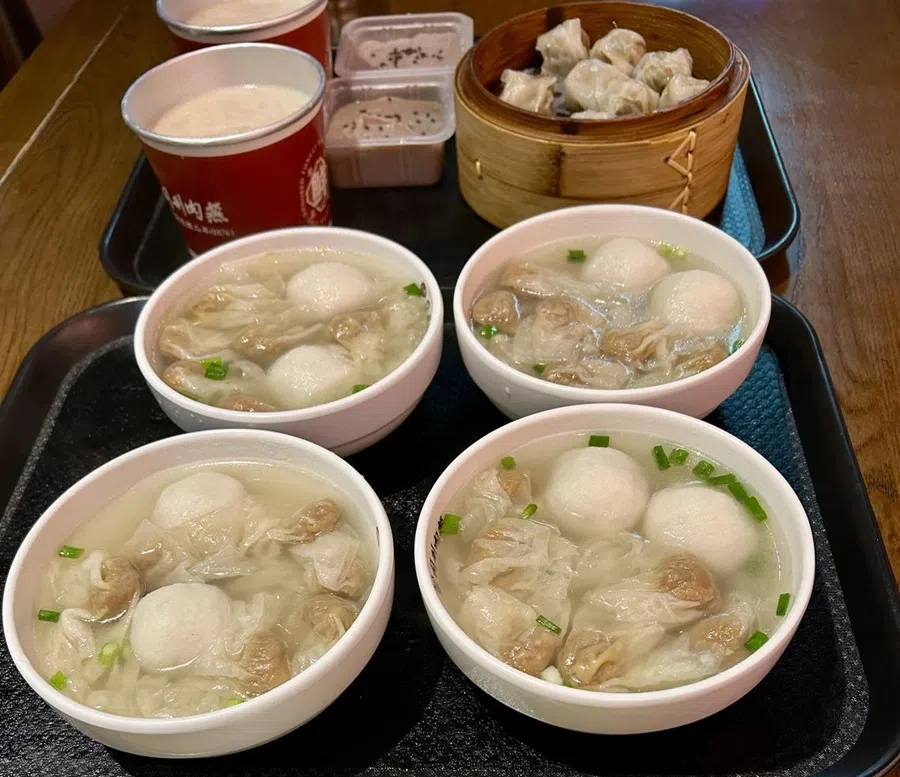
Laohua (捞化) is a popular Fuzhou dish, but it is all about the toppings rather than the noodles. It starts with a bowl of Xinghua rice noodles, customised with goodies like prawns, cuttlefish, oysters, fish, or pork innards like liver, heart, and intestines, along with mushrooms, tofu and so on.
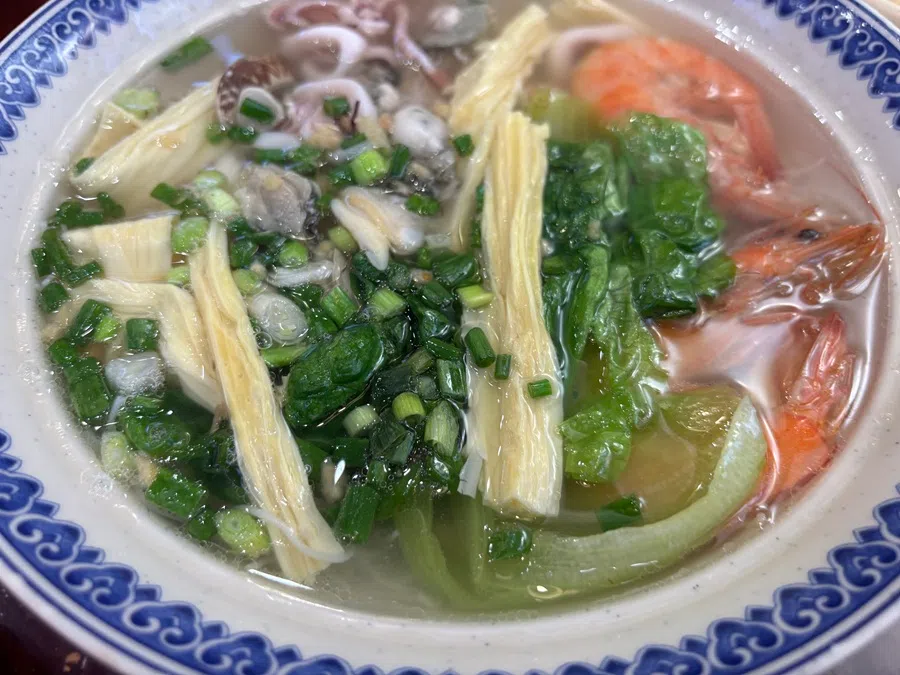
In Shangxiahang, there is a century-old shop called Erlong Bo (耳聋伯, lit. “deaf uncle”), founded in 1898, famous for its traditional snacks like tangyuan (glutinous rice balls), peanut soup and taro paste. Their savoury meat-filled tangyuan are a standout and well worth a try!
Beyond the famous Tongli Rouyan, Fuzhou boasts loads of popular local chains like Antailou Restaurant and Lao Fuzhou, serving up authentic Fuzhounese dishes and snacks — perfect spots for a taste of the real deal.
This article was first published in Lianhe Zaobao as “住古巷老宅 穿梭福州新旧世界”.




